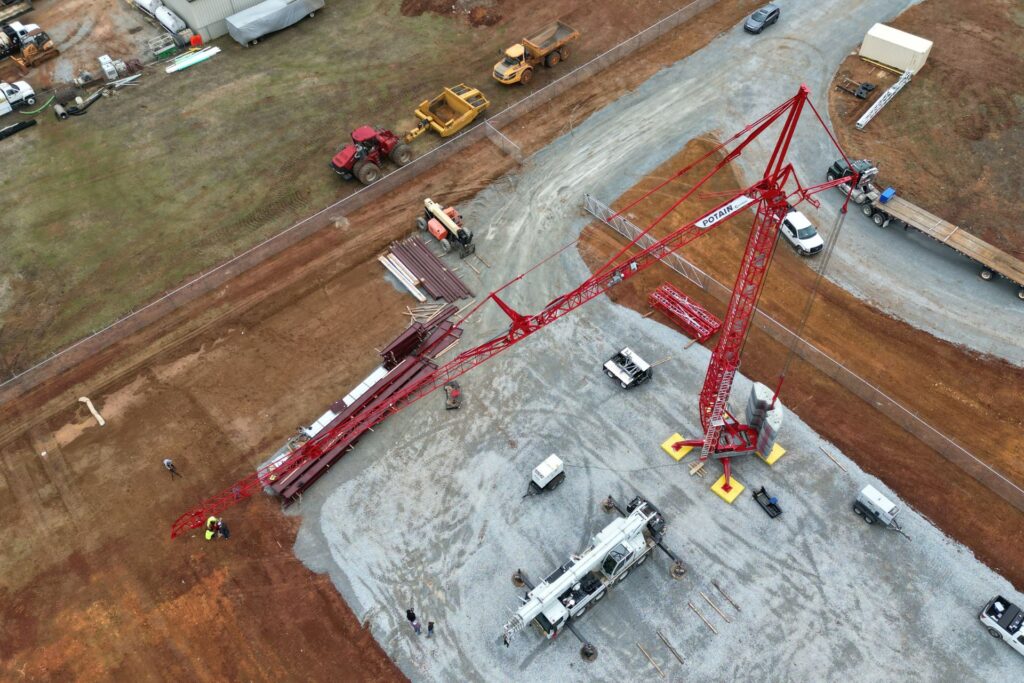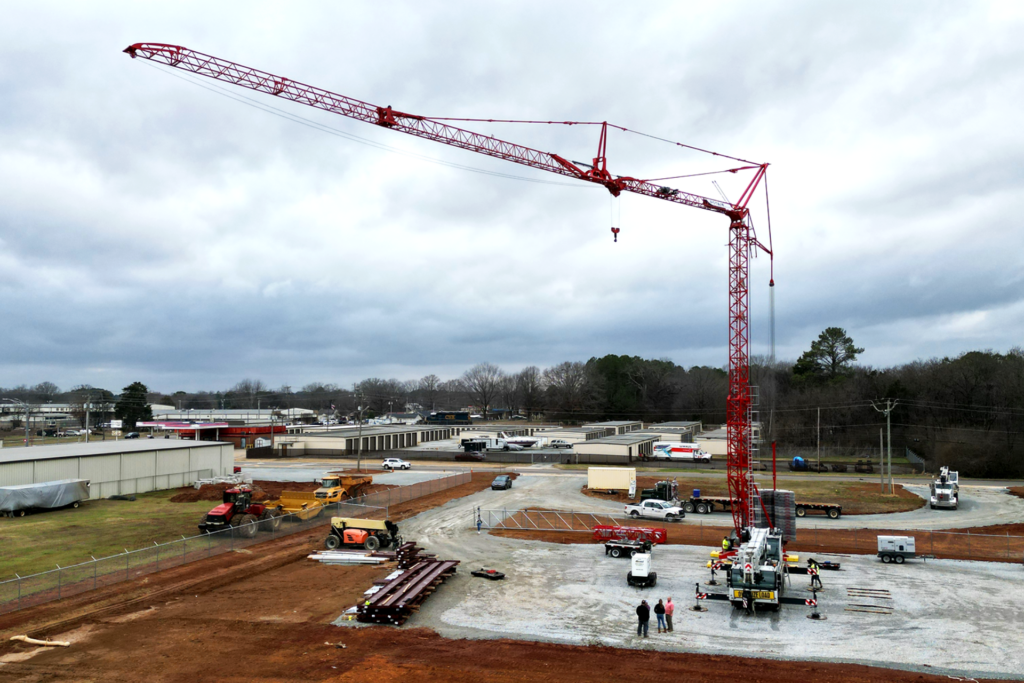There are several different factors to consider when choosing the right tower crane for your job.
With tower cranes being the workhorses behind skyscrapers, bridges, dams, and other tall structures, it’s hard to imagine what the world would look like without them — literally. Tower cranes are essential pieces of equipment for construction sites, and they keep the world moving forward. These machines provide a cost-efficient solution to jobs, plus they’re more energy efficient than other types of heavy machinery. And since each type of tower crane is different, we’re going to break down each one — figuratively speaking.
Why Use a Tower Crane
Tower cranes outshine their competitors in their lifting capabilities and the immense heights they can reach, which is why they are used the most throughout the world. And even among these factors, they still manage to have unmatched stability when performing jobs. So when it comes to lifting your toughest and heaviest loads, tower cranes are your best, and safest, bet.
Disadvantages of Tower Cranes
With larger pieces of machinery, maintenance is inevitable. And since tower cranes are such big pieces of equipment, repairs and maintenance can be costly. They also take time to be moved from one location to another and can be a hassle to install.
Because of these reasons, many contractors decide to hire out companies to do the work for them. If you’re in need of an expert crane company that delivers results and takes out your guesswork, consider choosing NexGen Crane & Rigging. Every construction crane has disadvantages, and tower cranes are no exception. Make sure to take all factors into consideration when making your decision.

Potain T-85 tower crane erected at the Athens, AL equipment yard in January 2023.
Common Types of Tower Cranes
Hammerhead Cranes
One of the most common types of tower cranes used worldwide, hammerhead cranes are distinguished by their horizontal jib, which gets its name from looking similar to a hammerhead shark. These cranes are accurate, with the ability to move materials horizontally all while using extreme precision. And since they can lift different types of materials and load sizes, this crane is extremely versatile.
The hammerhead crane is also known for how high it can lift, which is why it is typically used for projects with tall buildings. When you use this crane, make sure it has enough space to maneuver since it has such a large swing radius. After all, knocking a crane into a newly constructed building, or even someone else’s property, might not be the best publicity.
Luffing Jib Cranes
Ideal for use in urban areas, luffing jib cranes have a diagonal jib arm that allows for versatile movement. The diagonal arm’s ability to move up and down makes this crane great for working in tight spaces. And because of these characteristics, these cranes are great for working in areas with high winds where stability is crucial.
Self-Erecting Cranes
With the ability to erect and dismantle by use of a remote control, self-erecting tower cranes are the most efficient by far. They can complete projects at a speed much faster than other cranes, allowing production time to be cut in half. Self-erecting cranes take up less space on a job site and are ideal for projects that require the crane to be relocated since the setup and dismantling process is quick. They are optimal for small or medium sized jobs, such as construction of an apartment building.

Potain T-85 self-erecting tower crane erected in Athens, Alabama.
Flat Top Cranes
These cranes are best utilized in tight spaces. They have a compact design, making them a good choice for projects where space management is crucial. And since these cranes have a flat jib, meaning there is no anchoring mechanism like on the hammerhead crane, the process for setup is simpler.
What to Consider When Choosing a Tower Crane
Unless you hire a company that chooses the right crane for your job, there are a few things to consider when selecting what crane meets the needs of your project.
Capacity
How much a tower crane can lift, how far it can reach, and the type of materials it can transport are important when determining the right crane for your project. Ensure that the crane you choose checks off all the right boxes to avoid any mishaps or delays in your project.
Location
When thinking about location, keep the job site layout in mind. This might even require visiting the site to get an idea of the most probable layout. You want to ensure there is ample space for the tower crane to be placed on the job site as well as room for it to maneuver as needed. In some cases, this factor could determine the decision you make between two cranes, since there are some designed to fit in tighter spaces.
Cost
The exact amount a tower crane will cost can vary depending on a number of factors. Hiring a crane company, leasing a crane, or purchasing one of your own will all have different price points. If you have a limited budget, for example, then purchasing a crane of your own might not be the best option for you or your company. Taking all factors into consideration is important when making a budgetary decision.
Purchasing your own crane also requires the expertise of operating one. Specialized knowledge and skill is needed to successfully handle a crane — a problem that hiring an experienced company like NexGen can solve.

